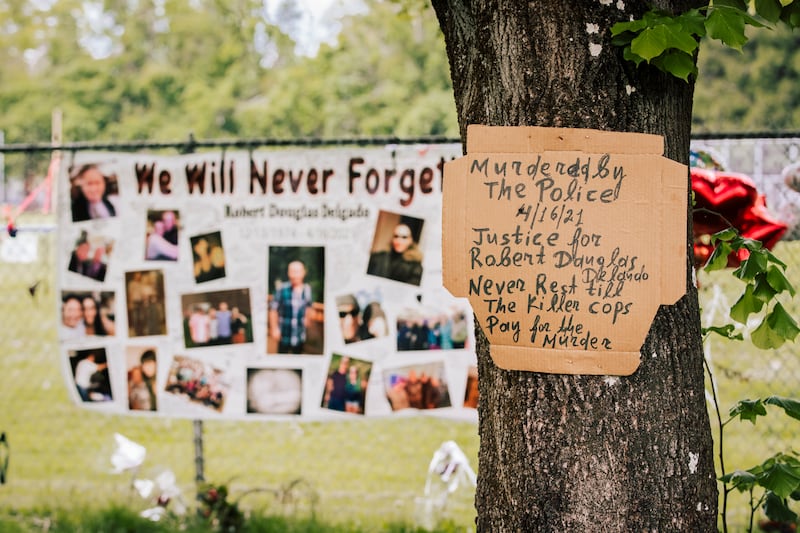On a recent warm spring evening, parents cheered their teenage sons playing baseball at Walker Stadium in Lents Park. With each hit, the players trotted 90 feet from base to base.
Ninety feet is also the distance between a pair of leafy trees next to the ballpark.
Nearly one month ago, Robert Delgado died next to one of those two trees.
Ninety feet away, Portland Police Officer Zachary DeLong took cover behind the other and killed Delgado with a single shot.
Concerned Portlanders had called 911 the morning of April 16 to report a man quick-drawing a handgun in the park “like James Bond or like a cowboy.” Police arrived and found Delgado, who reportedly ignored their demands to put up his hands and instead flipped them off. DeLong fired his AR-15 rifle.
Police then found Delgado’s alleged weapon. It was a replica gun, with a bright orange tip required by federal law to indicate a fake.
From 90 feet away, it would have been nearly impossible to see the orange piece of plastic.
“They watched my father bleed out,” says Delgado’s son Skyler. “I just felt they failed my father multiple times that day. Lethal force should be your last resort.”
There is much we still don’t know about Delgado’s death. Police haven’t said where Delgado was struck, why DeLong fired his rifle, or whether the city dispatched trained mental health crisis responders, known as Enhanced Crisis Intervention Team officers, to the scene. The Portland Police Bureau has declined to release audio of the 911 call or calls that preceded Delgado’s death April 16. (WW has appealed the denial of its public records request to the Multnomah County District Attorney’s office.)
But after more than a dozen interviews and a review of police training manuals, use-of-force data and consultant reports, a picture develops of two trends in Portland policing that have received scant attention.
First is the percentage of Portland cops who choose to carry not just a bureau-issued Glock 9 mm pistol but also a .223 Colt AR-15, a semi-automatic rifle that has been the gun of choice used by shooters in many of the mass killings in recent years.
Two decades ago, no Portland patrol officers carried an AR-15. Now 168 sworn officers do. That’s 20% of the 812-member bureau. (In contrast, 146 PPB officers are ECIT-certified.)
Second is the disorganized, almost cavalier manner in which the city has monitored whether its 911 desk is sending police to scenes with the best possible information.
Since 2010, 1 in 4 people Portland officers have shot were thought to have a weapon—but in fact either had a replica gun, or no weapon at all, according to use-of-force data shared by the bureau. Seven of those mistaken shootings were fatal.
As those shootings illustrate, officers have been sent to respond to calls after being told by 911 dispatchers that a weapon was involved only to find someone with a replica handgun or no weapon at all.
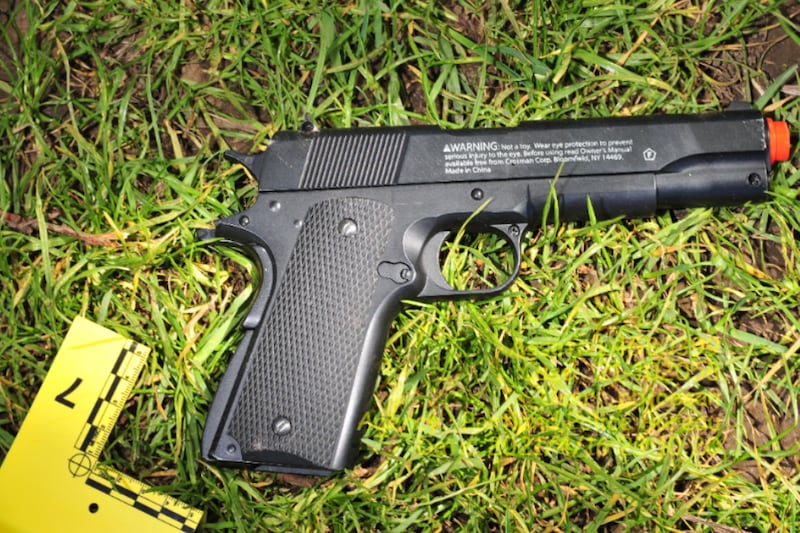
Just how regularly does that happen? The city doesn’t know: A consultant who analyzed Police Bureau data admitted it was too sloppy to rigorously analyze (see “Numbers Game”).
No argument in this city is more pressing and heated than how to stop police from shooting people who pose little threat to others. Yet WW’s reporting shows an extraordinary lack of knowledge by public safety officials about the calls police respond to.
Emergency dispatchers don’t know whether a reported gun is real or not—and they ask few follow-up questions to find out. Moreover, the Police Bureau doesn’t keep meaningful records of what police find when they respond to a 911 call about someone wielding a weapon.
The result? One of the only things standing between a Portland police officer with an AR-15 and a homeless man with a toy gun is an emergency operator with few instructions for determining whether a deadly weapon actually exists.
Related: The Portland Police Bureau rubber-stamped a us-of-force report with dubious findings.
“The consequences can be tragic,” says Michael Gennaco, the former chief attorney of the Office of Independent Review for Los Angeles County who helped found the California-based OIR Group, which assesses police shootings in Portland. “The problem for the officer is you can never be sure, and you’re reliant to some degree on information that is coming from individuals you don’t know.”
City officials have few answers to our questions.
“We hope to do better and figure out a better way,” says City Commissioner Mingus Mapps, who oversees the Bureau of Emergency Communications, which answers 911 calls. “But as long as there are toy guns in this world, it creates ambiguous and dangerous situations.”
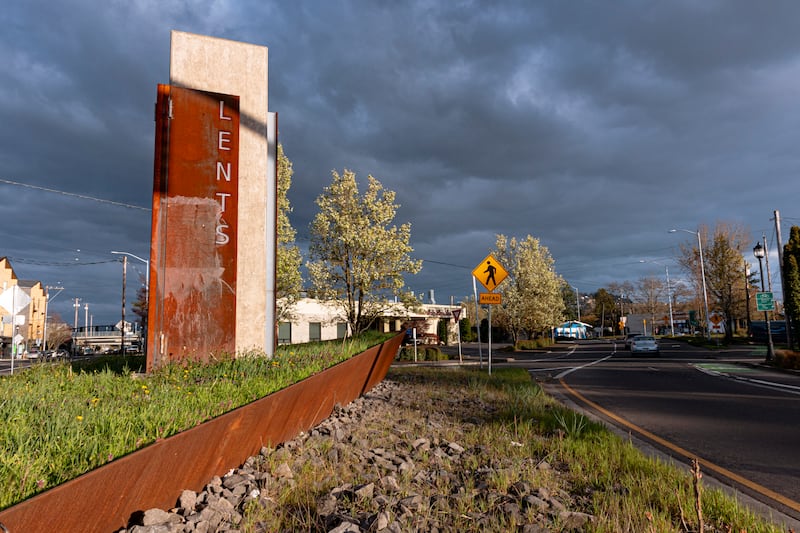
When a Portlander calls 911, that call is answered in an operations room that, in an odd coincidence, happens to be located in Lents.
This is the dispatch floor of the Bureau of Emergency Communications, where 105 call takers and dispatchers field approximately 40,000 911 calls a month.
“When I think of metaphors that capture some of what they do, I’m more inclined to think of air traffic controllers,” says Mapps, the city commissioner overseeing the system. “Frankly, it really is often a matter of life and death.”
New hires must complete 300 hours of classroom training, followed by one-on-one coaching on the operations floor until the employee is ready to operate independently. Entry-level trainees earn about $54,000 a year, with senior dispatchers earning about $86,000.
“You never know what you’re going to get, which is part of the appeal of the job,” says Bob Cozzie, director of BOEC. “But our folks talk to people on the worst day of their lives. Imagine the weight of responsibility on their shoulders.”
BOEC’s 911 emergency staff, which all works on the same operations floor, is split into two categories: call takers and dispatchers. When you call 911 in Portland, you will speak with a call taker, who asks you questions to determine where you are and what kind of help you need.
The call taker “codes” the call according to its category (disturbance, threat, assault, etc.) and, if the caller is describing what sounds like a mental health crisis, flags the call so that an ECIT-trained officer can be dispatched. (Three percent of the time an ECIT officer is requested, none are unavailable, according to the police bureau.)
“We’re trying to paint a picture for our responders,” says BOEC training manager Melanie Payne. “There’s not a script. We are trying to describe, objectively, what is happening.”
The call taker then relays that information to a dispatcher, who in turn communicates directly with first responders like police officers, firefighters or paramedics. Dispatcher communication is a two-way street: Police, for example, can ask dispatchers for more information, or request that the dispatcher send a special response unit, such as a K-9 or an AR-15 rifle operator.
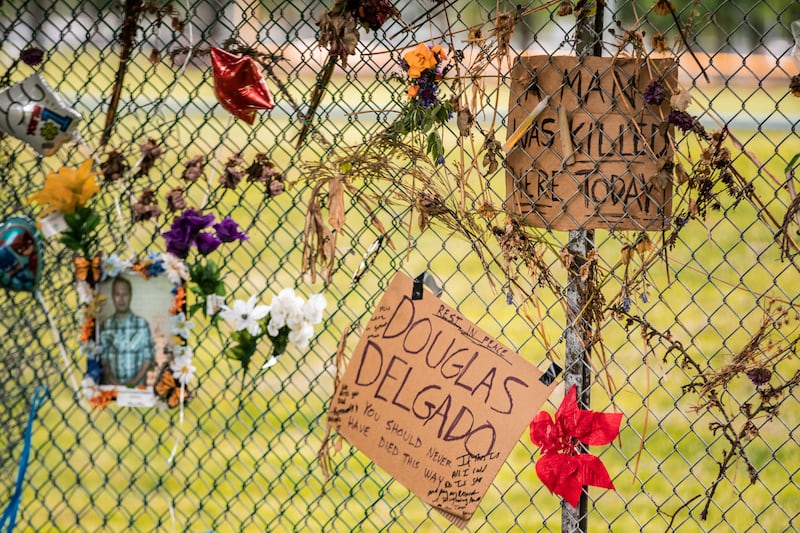
Yet there is no protocol for asking follow-up questions about the weapon once the type of weapon has been broadly established.
“That’s not a part of our triage,” Payne says. “We will ask for the person to describe the weapon. We don’t have any specific questions to ask to identify further.”
Cozzie says BOEC follows guidelines set by the Portland Police Bureau.
“Our policies are established by the agencies that we dispatch for,” he said.
BOEC’s weapons-related questions, furnished by the Police Bureau, are as follows:
(1) Are weapons involved?
(2) What type?
(3) Who has the weapon?
(4) Describe the subject(s).
(5) Where is the weapon (hand, pocket, vehicle, etc.)?
Most striking to several civil rights lawyers is the fact the questions don’t include any request to describe the weapon beyond its basic category—such as “a knife” or “a gun.” Nor do they inquire whether a gun might be a replica because of its bright orange tip, for example.
“It would be crucial” to ask further questions about a weapon, says Portland civil rights lawyer Juan Chavez. “It’s a well-understood interviewing tactic that sometimes you do need to guide somebody to a detail that could be in their head but they haven’t recalled it yet because they haven’t been prompted.”
That detail grows more crucial when you realize how often Portlanders get it wrong.
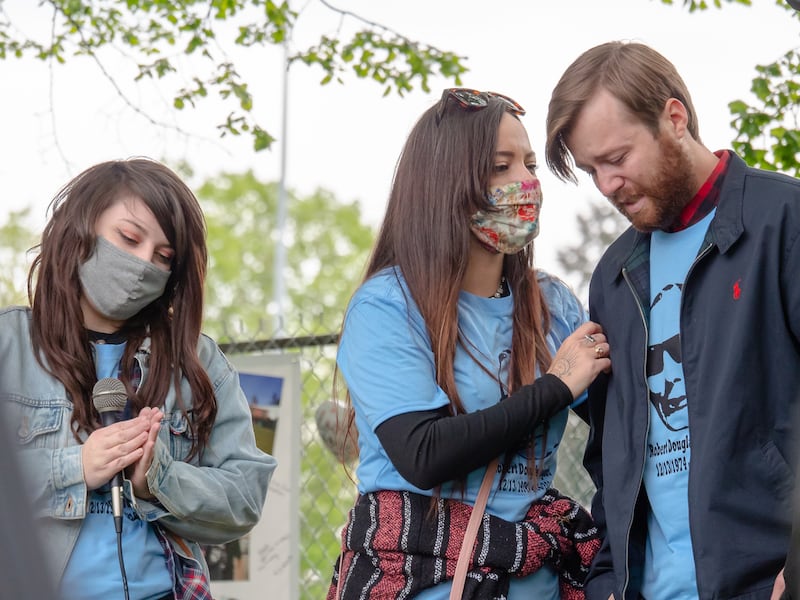
Essentially, the only reliable statistics on how often Portland police are wrong about a weapon are compiled after an officer pulls the trigger. That’s especially troubling, given the military-grade firepower that many officers, including beat cops, are packing in their patrol cars (see “Long Shot”).
In 11 of the 51 police shootings dating back to 2010, the suspect was carrying a fake gun. In four of those shootings, the person was perceived as armed, but wasn’t carrying any weapon at all.
In nearly every PPB shooting since 2010 where police’s perception of the subject’s weapon was incorrect, they believed the person had a firearm—which was actually a replica gun, a cellphone, a telephone receiver, a wallet, or nothing at all.
Related: How Portland police came to be armed with military-grade rifles and what happened as a result.
Take the case of Chase Peeples, whom police shot from nearly 60 feet away during a bank robbery in 2017, believing Peeples (who survived the shooting) had a gun.
“As we got, I want to say maybe about 10 feet away from him, something like that, that’s when I could see that the black object on the ground was, like, a wallet,” testified Officer Madison Curtis Ceasar, who was on the scene but did not shoot Peeples. “I was told to stand over the wallet.”
On rare occasions, subjects have acted as if they had a weapon when they didn’t. Such was the case in the fatal shooting of Merle Hatch in 2013, who reportedly raised a black object that looked like a firearm toward responding officers and told them, “Come on, play,” and, “I’m coming to you then, pig. Let’s go. Let’s go.”
Twelve minutes after arriving on the scene, three officers fired on Hatch, including Officer Andrew Hearst, who was operating an AR-15 rifle from about 50 feet away.
“The object that officers believed was a gun was, in fact, a broken black plastic phone handset,” the OIR Group wrote in its 2016 report.
Some Portlanders, frustrated by slow response times, have admitted to saying there was a weapon present when there wasn’t to elicit a faster police response.
During an April 8 meeting of the Lents Neighborhood Livability Association, where Portland Street Response gave a presentation, a woman who didn’t identify herself by name but said she’s lived in Portland for 68 years described a common refrain among neighbors.
“There was a saying going [around] that started a couple years ago: If you’re having any issues or problems, make sure you tell them that there’s some kind of a weapon…so that the police would come. Otherwise, they’d never come,” the woman said. “And I’ll be honest, that’s what the neighbors were telling neighbors.”
Ashlee Albies, a lawyer representing Delgado’s family, adds that many unhoused people in Portland choose to carry a weapon for personal protection.
“How many people call the police because they just want the problem ‘dealt with’?” Albies said. “[Police] are trained to get control. They have weapons. They’re trained to use them. So it’s not just on them. It’s also on all of the people who call, the 911 operators, and the police response. All of it.”
Dan Douthit, a spokesman for BOEC, says the Police Bureau decides what questions call takers can ask. He says the bureau knows that some of the reports it receives about weapons turn out to be false.
“Anecdotally, BOEC is aware that many calls in which the caller reports symptoms of a heart attack are determined by responders to be something different,” Douthit says. “That does not mean callers should be discouraged from reporting what they perceive as heart attack symptoms.”

Mapps, who was elected to the Portland City Council in November, is just the third Black man to serve as a city commissioner.
In January, Mayor Ted Wheeler assigned him oversight of BOEC, which is now at the center of questions about how to prevent armed police officers from interacting with distressed Portlanders who pose little threat to public safety.
This week, the City Council is debating how quickly to expand Portland Street Response. That program, still in its infancy, is the city’s most ambitious effort yet to send someone other than armed officers to respond to people in mental health crises, like Robert Delgado. The argument over that program’s future is making Portlanders furious.
Yet the debate is largely irrelevant until the city can correctly identify the scenes it is sending responders to.
Portland Street Response couldn’t have responded to Delgado on April 16 because it isn’t supposed to go to scenes where a weapon has been reported present.
“While people are asked to report what they see and perceive, we also know it can very often be wrong,” says Tim Becker, a spokesman for the mayor. “It’s the job of police to look for ways to confirm it or refute it.”
City Commissioner Jo Ann Hardesty, who oversaw BOEC prior to Mapps, says the issue of incorrect weapons reports didn’t arise during her tenure. “Unfortunately, it seems to have taken Portland’s most recent fatal shooting by police for more attention to be brought to this specific issue,” Hardesty says. “Ultimately, BOEC dispatchers rely on the public to give them accurate information when calling 911 and have strict protocols to follow based on the information they receive from the caller.”
Mapps says the vast majority of 911 callers are reporting “in good faith” and that the inaccuracy of 911 calls is, to a certain extent, “baked into the nature of this work.”
“People don’t call [911] because they see someone playing with a toy gun. Our first witness is probably calling because they see someone with what they assume is a real gun,” Mapps says.
When pressed by WW, he conceded there is “absolutely” room for BOEC to improve the questions it asks callers.
“I’m sure that we will or already are in the process of evaluating and updating our questions, maybe asking questions about, ‘Is there an orange tip on the gun?’” Mapps says. “As an African American, I can tell you that people try to misuse the police in order to enforce racial hierarchies. Being poor and houseless is not a crime, and I think that’s a message that needs to go out loud and clear.”
In an interview with WW, Delgado’s family remembers him as a playful and charismatic “movie buff” with a spot-on Dr. Evil impression and an affinity for classic rock. Most of all, they said, he loved being a dad.
“He was the proudest father,” says Robert’s sister, Tina. “Those kids—that was his treasure.”
Delgado’s daughter, Kennedy, says one of the factors that disturbed her the most about her father’s death was how quickly events transpired.
“The thing that really breaks my heart is when I listened to the dispatcher describing that he was ‘acting like James Bond,’” Kennedy says. “He would do things like that. One of my favorite things about my dad is that he was silly like that. It just makes me wish that there was more investigating before the trigger was pulled.”
